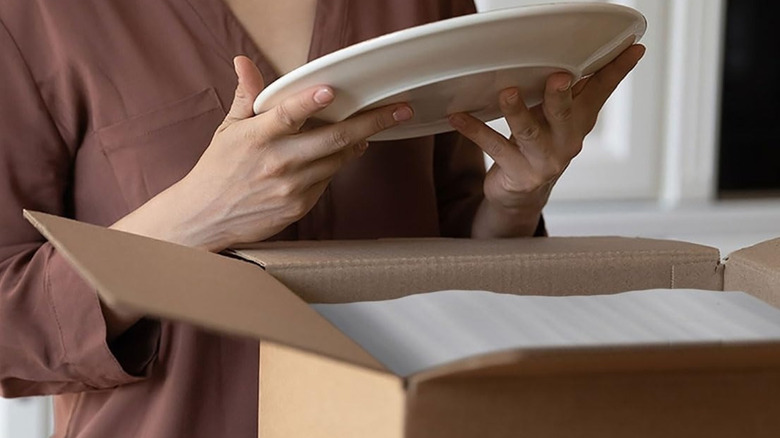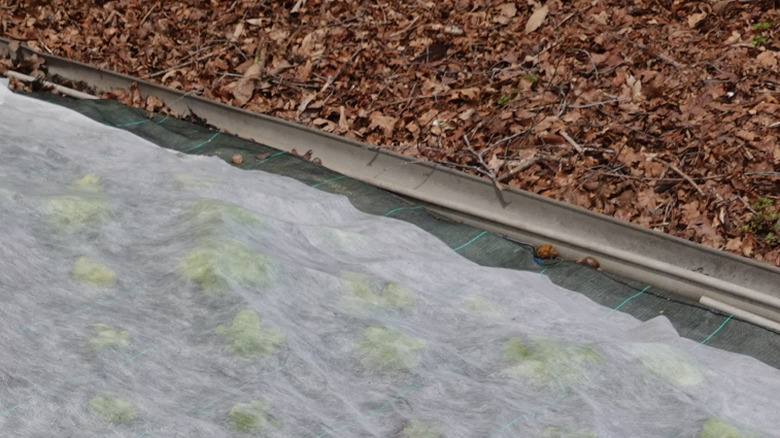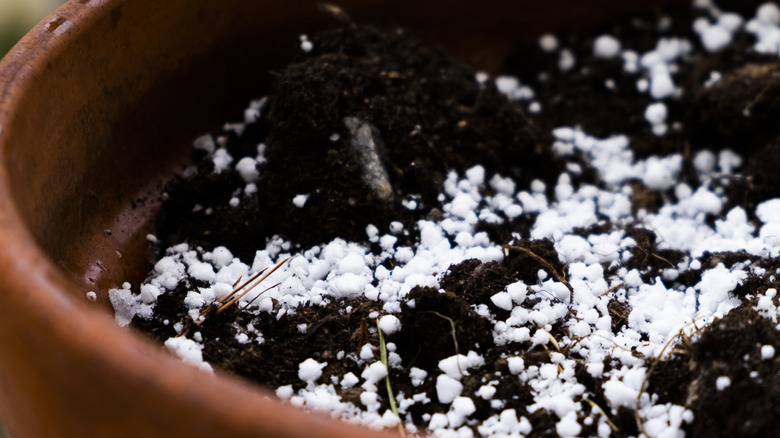Don't Throw Out Thin Foam Packing Sheets, They're A Hidden Gem In Your Yard
We may receive a commission on purchases made from links.
One of the biggest concerns for most home gardeners is keeping their plots clear of weeds. Any undesirable plant growing in your backyard could be considered a weed, but some are more troublesome than others. Invasive plants crowd out less aggressive native or wanted plants and siphon off resources like water, nutrients, and sunlight. Weeds can sneak into a garden in all sorts of ways. They expand from neighboring properties or arrive as seeds stuck in the tread of your shoe. Mulching is one of the best ways to handle them. A thick layer helps block their growth. You can choose between organic mulches (like bark, pine needles, or compost) and synthetic options (like woven landscape barrier). Another free or cheap option to consider is repurposed thin foam packing sheets.
You know the type. Whenever you order fragile goods from Amazon, like a new kitchen appliance or that new holiday mug for your growing collection, they often come wrapped in thin foam packing sheets. Sometimes, they also arrive in hard, molded styrofoam. Your first instinct is probably to trash or, as a better option, recycle this stuff alongside the rest of the packaging. However, there are actually lots of DIY ways to repurpose styrofoam in your home and garden. One such way is to take the thin packaging sheets and lay them over your soil as a mulching material. They'll suppress the growth of weeds or keep the soil from drying out. However, this product isn't without its problems in the garden — namely that it's made from plastic and takes years to break down.
Thin foam packing sheets as weed barrier and insulation
It's recommended to mulch your garden with 2 to 4 inches of material coupled with targeted irrigation. Keeping the rest of the bed dry can help to get rid of weeds from your garden. Thin foam packing sheets can help with mulching and weed control. Preparing a weedy patch of lawn for future growing? Lay these sheets down to deprive the weeds of sunlight. Gardeners protecting vulnerable plants during the cold winter months can also use thin foam packing sheets to keep an insulating mulch layer dry. Damp mulch doesn't insulate well.
When laying down the thin foam packing sheets in your garden, leave a small gap between the sheets and the ground to improve air circulation and reduce the risk of soil compaction. A tight-fitting plastic barrier can cause your plant's roots to tangle in the plastic, making them hard to separate when it comes time to harvest your vegetables or divide your perennials.
If you haven't received a package from Amazon recently with sheets you can upcycle, you can purchase a 100-pack of lightweight DAT Foam Sheets for about $19. A six-pack of thin Silverlake Styrofoam Craft Foam Boards costs about $23. Measure your garden bed to make sure you have enough material to cover the entire area you wish to protect. Hard styrofoam packaging molds could be an alternative option if you slice them into thin sheets. Or some potting soils use pieces of packing foam in place of perlite. However, the process to break hard styrofoam down can be messy.
Foam in the garden: environmental impacts to be wary of
The biggest concern regarding using polystyrene products, such as thin foam packing sheets, in the garden is the environmental impact. The material is non-biodegradable, so small pieces of styrofoam may remain in your garden long after it has lost its usefulness as mulch, weed control, or insulation. It takes about 500 years to decompose. The small pieces are difficult, if not impossible, to remove from soil by hand. While some polystyrene can be recycled in a few U.S. states, most of it can't be. If you buy the sheets new, you're also contributing to an environmentally harmful industry. There's also some evidence that compounds leached from styrene products or inhaled in workplaces are potentially carcinogenic.
Researchers at North Carolina State University and companies like Cruz Foam are working on sustainable alternatives to traditional foam packing products. However, what's used to protect most items for delivery today is still plastic-based. The takeaway? If you're buying furniture on Wayfair or any other big-box store and the package arrives filled with thin foam packing sheets, you can repurpose them in your garden. Use them temporarily, and remove and recycle or responsibly discard the sheets as soon as they start to break down. Alternatively, some Master Gardener programs organize polystyrene collection drives that accept foam packaging materials. Check for local events in your area.


